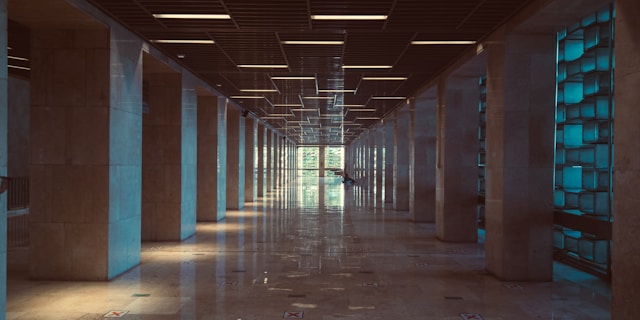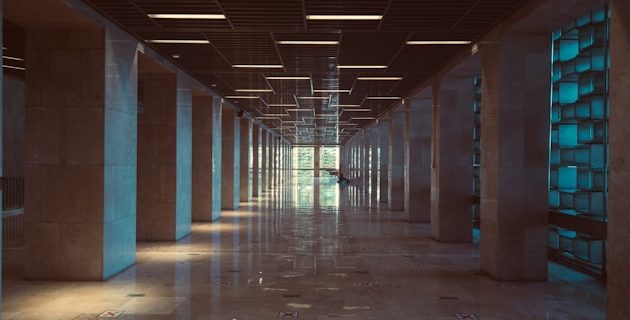
Jakarta, Indonesia’s sprawling capital city, offers a unique blend of modernity and history, telling the story of Indonesia’s vibrant past. As a center of trade, culture, and politics in Southeast Asia for centuries, Jakarta is home to a wealth of historical sites, each preserving tales of the colonial period, the Indonesian independence movement, and local culture. From preserved architecture to museums showcasing artifacts and stories, here are the top 10 historical sites in Jakarta that you must visit to truly understand the city’s rich heritage.
1. National Monument (Monas)
The National Monument, or Monumen Nasional (Monas), stands as a symbol of Indonesian independence. Erected in 1961, this 132-meter-tall monument is located in Merdeka Square and is topped with a gold-plated flame representing the nation’s struggle for freedom. The base of the monument houses a museum that provides a detailed timeline of Indonesia’s journey toward independence. Visitors can also ride an elevator to the top for a panoramic view of Jakarta, an unforgettable way to experience the city’s vastness.
2. Kota Tua (Old Batavia)
Kota Tua, or Old Batavia, is the heart of Jakarta’s colonial past. Dating back to the Dutch colonial era, this historic district is a testament to Jakarta’s Dutch roots, boasting well-preserved colonial architecture and cobbled streets. The Fatahillah Square is the centerpiece, surrounded by iconic buildings like the Jakarta History Museum (also known as Fatahillah Museum), which provides insights into Jakarta’s evolution over centuries. Stroll through the square, and you’ll also find the Wayang Museum and the Fine Art and Ceramic Museum, offering cultural insights that are integral to Indonesian heritage.
3. Istiqlal Mosque

The Istiqlal Mosque is not only the largest mosque in Southeast Asia but also a symbol of Indonesia’s religious tolerance and unity. Constructed to commemorate Indonesia’s independence, the mosque can accommodate over 200,000 worshippers. Its impressive architectural features include a 45-meter dome and towering minarets. Located close to the Jakarta Cathedral, the mosque stands as a reminder of the religious diversity in Indonesia, as both buildings share a harmonious space, reflecting the country’s commitment to interfaith harmony.
4. Jakarta Cathedral
Directly opposite the Istiqlal Mosque, the Jakarta Cathedral is another architectural marvel. Built in 1901, this neo-gothic structure is one of the most iconic religious buildings in Jakarta. The cathedral, officially known as the Cathedral of Our Lady of the Assumption, features towering spires, intricate stained glass, and ornate interiors. A small museum within the cathedral showcases artifacts from its history, making it a fascinating stop for history and architecture enthusiasts alike.
5. Taman Mini Indonesia Indah (TMII)
Though not a historical site in the traditional sense, Taman Mini Indonesia Indah (Beautiful Indonesia Miniature Park) offers a cultural and historical tour of Indonesia in miniature form. Created in the 1970s, this vast park showcases various traditional houses from each of Indonesia’s provinces, providing a snapshot of the country’s ethnic diversity and cultural richness. Museums, theaters, and cultural exhibits within TMII offer an immersive experience of Indonesia’s past and present.
6. Museum Nasional (National Museum)
The National Museum, located near Monas, is a must-visit for anyone interested in Indonesian history and culture. Often referred to as the Elephant Building due to the elephant statue at its entrance, this museum houses a vast collection of artifacts, including prehistoric relics, Hindu-Buddhist sculptures, textiles, and ethnographic displays. Its galleries tell the story of Indonesia’s ancient civilizations, showcasing treasures from the Majapahit and Srivijaya empires and giving visitors a deeper understanding of the archipelago’s cultural heritage.
7. Sunda Kelapa Port
Sunda Kelapa is Jakarta’s ancient port and one of the oldest parts of the city, tracing its origins back to the 13th century. Once a bustling trade hub during the era of the Sunda Kingdom and later the Dutch East India Company, Sunda Kelapa was the starting point for Jakarta’s transformation into a thriving metropolis. Today, traditional Phinisi schooners dock at the port, carrying goods between the islands, and visitors can take a boat ride to experience what life might have been like during its heyday.
8. Gedung Kesenian Jakarta (Jakarta Arts Building)
Built in 1821 during the Dutch colonial period, Gedung Kesenian Jakarta is an exquisite example of neoclassical architecture and one of Jakarta’s oldest theaters. Originally known as Schouwburg Weltevreden, the building has served as a venue for numerous significant events and performances, including those by the Jakarta Symphony Orchestra. The building’s historic interiors and intricate designs make it a cultural gem, with live performances and arts events held regularly to keep Jakarta’s artistic spirit alive.
9. Museum Bank Indonesia
Museum Bank Indonesia is a fascinating destination for history and economics enthusiasts. Located in Kota Tua, this museum is housed in a former bank building and offers an interactive journey through the history of Indonesian currency and banking. Exhibits explore the financial history of Indonesia, the impact of colonial rule on the economy, and Indonesia’s journey to becoming a sovereign financial entity. The museum’s impressive architecture, complete with marble floors and high ceilings, enhances the historical experience.
10. Proclamation Monument (Tugu Proklamasi)
The Proclamation Monument commemorates one of the most significant moments in Indonesian history—the declaration of independence on August 17, 1945. Located in Proclamation Park, the monument features statues of Sukarno and Hatta, the country’s founding fathers, as well as a replica of the independence proclamation text. The surrounding park area is often used for national events, and visiting this monument is an inspiring experience, allowing visitors to connect with Indonesia’s modern history.
By exploring these top 10 historical sites in Jakarta, you’ll gain a deeper appreciation of Indonesia’s diverse and complex heritage. Each location reveals different layers of the country’s journey through time, from ancient kingdoms and colonial influences to the spirit of independence and unity that defines modern Indonesia.